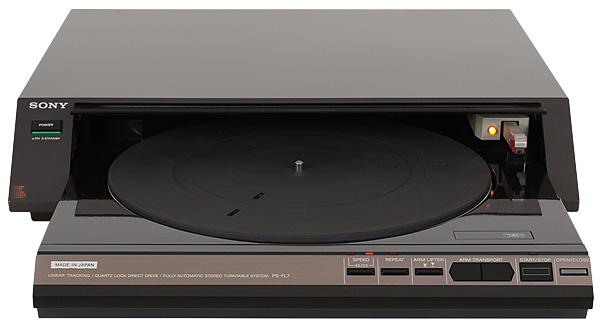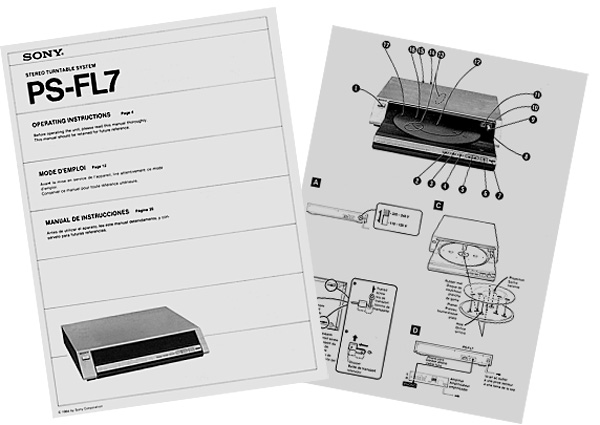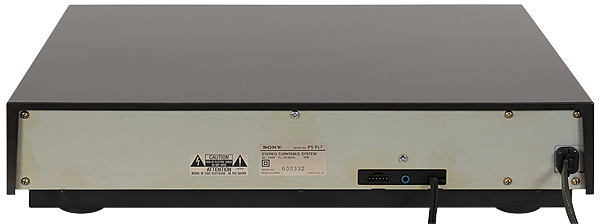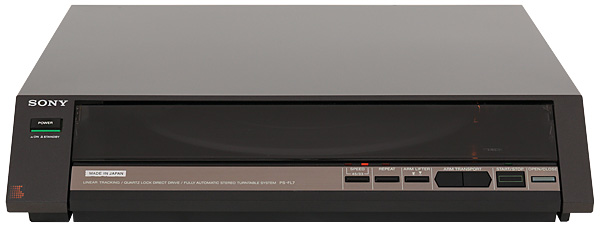Sony PS-FL7 turntable

 It was a deck designed to keep vinyl replay relevant in a market attracted to the convenience of CD. Did it succeed and, more importantly, how does it sound today?
It was a deck designed to keep vinyl replay relevant in a market attracted to the convenience of CD. Did it succeed and, more importantly, how does it sound today?
One challenge faced by those designing hi-fi in the high-tech 1980s was how to re-package the LP in a way that would ensure it remained of interest to consumers in a future that was clearly going digital. Released in late 1979, the Technics SL-10 turntable [HFN Apr '19], with its parallel tracking, optical position sensing and slick packaging was one of the first components to address this issue seriously.
When it came to cutting-edge audio products at this time, one could be sure Sony was never going to be far behind and the company's PS-FL7 we have here was another attempt to keep turntable sales going as Compact Disc increased its grip on the market. And at a glance, it doesn't look much like a turntable at all.

Bottom Drawer
Unlike many of the other large Japanese manufacturers, Sony did not rush to produce a 12x12in turntable to compete with the SL-10. Its contemporary offerings in this field were limited to the PS-Q3 and PS-Q7 miniatures, square but only just over 20cm wide and deep. However, these ultra-compact designs did not preclude the company from producing a full-sized modern vision for the LP format. Of all the manufacturers involved in the fight for market share, Sony was perhaps the most acutely aware of the impending arrival of CD and the way it would change consumer expectations when it came to automation, ease of use and the general appearance of all types of audio equipment.
Never an organisation to produce a derivative product, Sony came up with a series of drawer-loading turntables to tempt those with large collections of records as the Compact Disc era dawned. Although bulkier than the SL-10, these new models allowed a greater freedom of placement since other equipment could be stacked on top of them.
Motor Skills
Given that a full 1980s hi-fi stack may well have comprised a reasonably powerful amplifier, tuner, cassette deck containing two transports, graphic equaliser, timer and, of course, a CD player, Sony's drawer-loading turntables had to be built strongly, and they were. Moving the turntable to the bottom of the stack gave a fresh and obviously up-to-the-minute look to Sony's range, which was just what was needed in those style conscious times.

Released in 1985, the PS-FL7 is one of the later models in Sony's drawer-loading series. It may have been built for what would soon become a legacy format, but the technology inside could not have been more contemporary. The whole unit was controlled by a microprocessor with four motors under its command. Of these, one was a linear type, which was used for raising and lowering the arm. Two more were used for tracking and driving the plinth in and out of the cabinet, leaving just the BSL (brushless/slotless) direct-drive motor for the platter. This made full use of the new digital techniques developed for video recorders, the bulk of the circuit being contained in two chips sourced from Toshiba.
The servo system employed two 8-bit DACs, one of which corrected the motor's speed and the other its phase. Both were locked to a quartz crystal reference and as well as being accurate, a key attribute of this system was that only a minimal amount of setting up was required during manufacture. Meanwhile, the PS-FL7's arm was notable for its exceptionally short pivot-to-stylus distance – just 75mm. A finely engineered gimbal pivot was used, mounted on a light and rigid carriage which allowed the pivot point to overhang the remainder of the record.
Twin Modes
As for the cartridge, a standard T4P pick-up was specified, further enhancing the compactness of the arm assembly and allowing for simple upgrade and interchange if required. Finally, the plinth was cast in 'Sony Bulk Moulding Compound' (SBMC). This proprietary resin was used by Sony for all of its top turntables, including the PS-B80 [HFN Jul '12], TTS-8000 [HFN Sep '14] and PS-8750, and allowed complex shapes with the necessary acoustic properties to be formed with reasonable ease.

The PS-FL7 can be operated in two different modes. In fully automatic mode one opens the drawer, places the record on the platter and presses 'Play'. The record then disappears as the drawer retracts into the cabinet, its size being read by sensors that look up trough holes in the platter. Playback then continues until the end, although manual arm lifting and cueing (both power operated) is possible. In this respect the PS-FL7 approaches CD players in its convenience and there is no chance of damaging the record once it is loaded.
Track selection is tricky though, despite there being a bright orange LED on the end of the arm to illuminate the record grooves near the stylus. The door is heavily tinted and the area of interest is a long way inside the interior gloom, making finding a specific track or section a hit and miss affair. One can choose the starting point by positioning the arm at any desired point, but when 'Play' is pressed the record is still difficult to see inside the machine.
The alternative is to use the deck in manual mode, which is engaged by using the arm transport buttons to position the arm anywhere one wishes. Playback then starts when the arm lifter button is pressed and the stylus drops onto the record. Used like this, the machine plays with the drawer open so most of the record remains visible. However, the drawer cannot be closed in manual mode and all automatic functions are disabled, including repeat mode and the lifting and returning of the arm once the end of the side has been reached.
Silent And Clean
Which is the better approach depends on what you want to do, but I found that I was happiest with the PS-FL7 working in the automatic 'play the whole side and forget about it' mode. Of course, all the controls work with the slick precision that one comes to expect from quality Japanese equipment of this era, and the way the deck is built makes it feel like it would go on working like this forever.























































